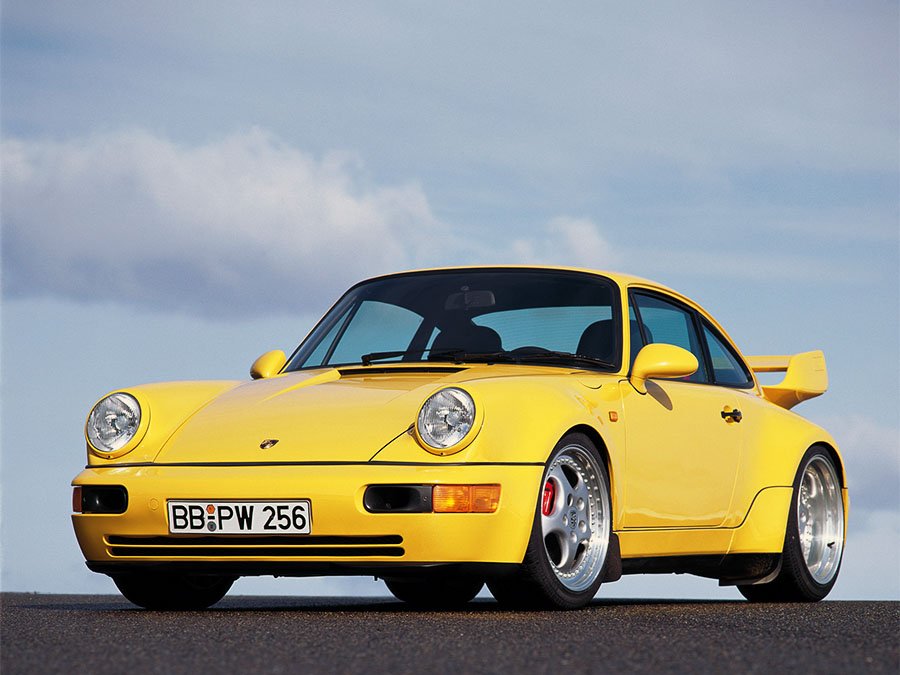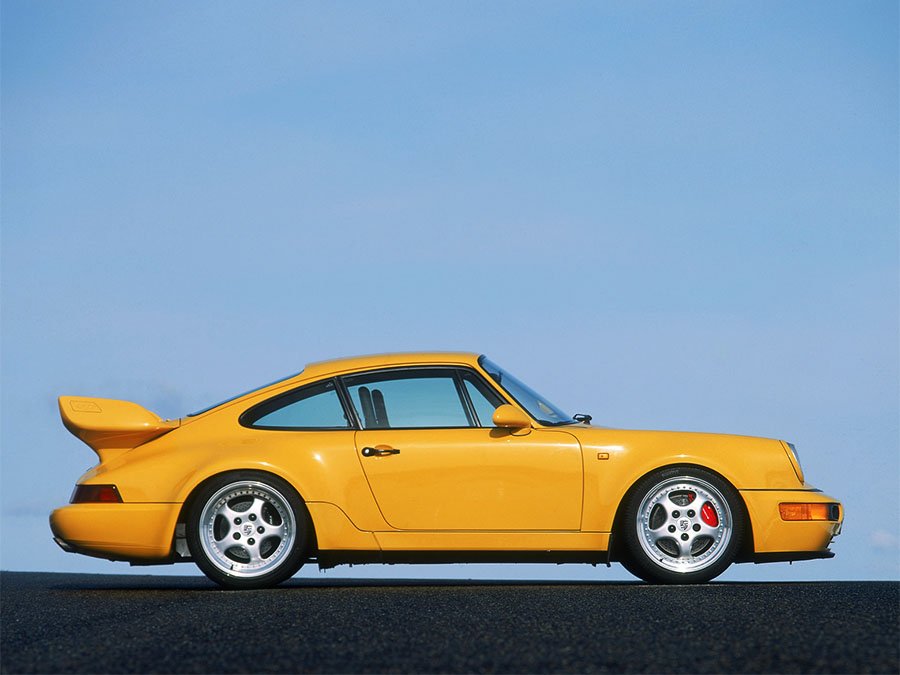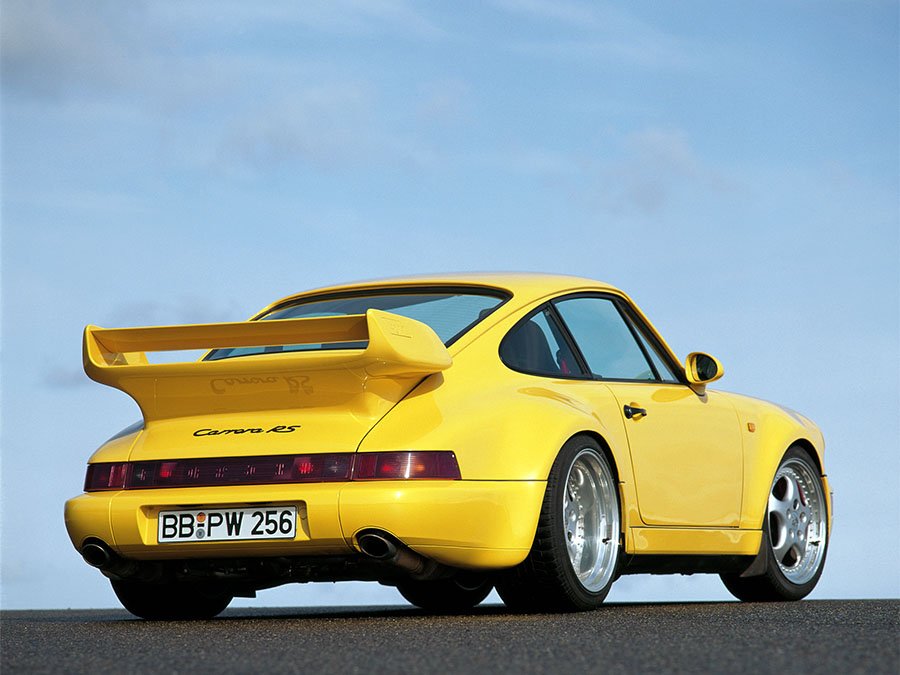Guide: Porsche 911 3.8 Carrera RS (964) - a Historical & Technical Appraisal
/BACKGROUND
When Porsche released the long awaited second iteration of their fabled Carrera RS in 1991, they found themselves with an unexpectedly popular machine.
This latest Carrera RS was based on the recently introduced 964 Carrera 2 platform. After its launch at the Geneva Motor Show in March 1991, nearly 2300 were built before production was discontinued in mid 1992.
Despite the commercial success achieved by the 964 RS, Porsche were still in an almighty financial mess; most major economies were in a tailspin and overall sales of the 964 and 968 had so far proven a big disappointment. Porsche’s other model, the long-running 928, was not a big seller either as it approached the end of its life.
Meanwhile, having ceased works participation with Group C Sports Prototypes in 1988 and then aborted a disastrous F1 engine programme in 1991, Porsche’s racing department was being under-utilised.
The implosion of the World Sportscar Championship ahead of the 1993 season (owing to a lack of manufacturer support on cost grounds) subsequently gave a massive boost to GT racing. The GT scene had recently been undergoing a tentative revival after years in the doldrums – its relatively low cost format in economically troubled times offered much appeal at a time when the availability of competitive Group C prototypes for privateers had completely dried up.
One of the most popular new GT racing cars was the M003-optioned 964 Carrera RS which had proven itself reliable and competitive during the 1992 season.
With this in mind, Porsche decided to create an even faster offering for 1993 – a modern day version of the legendary 911 RSR.
To homologate the new 3.8-litre RSR (the original 964 RS had used a 3.6-litre motor), Porsche needed to offer a road-going version. Fortunately, to convince manufacturers to create new GT racing cars, series organisers had slashed homologation requirements to just a single road-going vehicle.
Although they only technically needed to build one example of the new road-going 911 3.8 Carrera RS, Porsche thought a batch of special order customer cars assembled in the Customer Racing Department at Weissach would bring in some much-needed finance.
Costing roughly double that of the outgoing 3.6-litre Carrera RS, the first example of the expensive new model rolled out of the factory in April 1993.
Compared to its predecessor, the 911 3.8 Carrera RS featured an abundance of performance enhancing modifications. Like the earlier 3.6-litre car, this latest machine was not US-market compliant.
CHASSIS
Each 3.8 RS was based on a seam-welded Turbo bodyshell complete with a reinforced floor and beefed up mounting points for the rear suspension, transmission and anti-roll bars.
To save weight, the underseal was left off which resulted in the normal ten year anti-corrosion warranty being reduced to just three.
The regular 964’s power steering was deleted in favour of a lightweight steering rack.
Like every 964, the suspension layout comprised a MacPherson strut arrangement at the front with cast-aluminium semi-trailing arms at the back.
As per the 3.6-litre Carrera RS and limited edition Turbo S Lightweight, progressive rate springs, Bilstein dampers and aluminium instead of steel hubs were fitted. The 3.8 also came with a front strut brace like the earlier 964 RS. Similarly, there were ball joints for the upper spring strut mounts, hard rubber lower control arm bushings and modified trailing arm mounts at the rear.
As expected, spring and damper rates (fully adjustable) were specific to the new 3.8 variant.
Adjustable anti-roll bars were also fully adjustable and thicker than the 3.6 RS.
Another arrangement imported from the Turbo S Lightweight was the brake system. It comprised cross-drilled and ventilated discs of 322mm at the front and 299mm at the back. The same ABS set-up was retained and a hydraulic instead of vacuum servo was fitted along with a bigger master cylinder.
Like the Turbo S Lightweight, red-painted brake calipers were fitted as standard.
The 18-inch diameter three-piece magnesium wheels were an inch wider than the Turbo S Lightweight: 9-inch rims were fitted up front and 11-inch rims at the back (up from 8 and 10-inches respectively). They were originally shod with a choice of Pirelli or Dunlop tyres.
As per the 3.6 RS and Turbo S Lightweight, a long-range 92-litre fuel tank was fitted under the front lid although the twelve cars originally destined for Japan came with a standard 77-litre tank.
ENGINE / TRANSMISSION
The most obvious difference between the Type M64/04 engine fitted to this latest machine and the Type M64/03 unit found in the original 964 RS was its enlarged displacement. A 2mm bore increase (from 100mm to 102mm) yielded an additional 146cc and an overall capacity of 3746cc. Stroke was kept at 76.4mm.
The 3.8 motor was another dry-sumped twin spark all-alloy Flat 6 with single overhead camshafts and two valves per cylinder.
However, the naturally aspirated M64/04 lump was riddled with an array of special parts, some of which were sourced from prototype engines for the soon-to-be-released 993.
There was a new crankcase, new lightweight pistons and redesigned rocker arms. The intake system came with polished ports for improved gas flow, larger valves and individual butterflies to sharpen throttle response. There was also a hot-film air sensor instead of the flap-valve of the standard engine.
Inlet manifolds were enlarged from 49mm to 51.5mm. The exhaust manifolds went from 42.5mm to 43.5mm. A free-flow exhaust system came with two exit pipes and two additional oil coolers were installed.
Compression was upped from 11.3:1 to 11.6:1. Bosch Motronic 2.10 engine management replaced the earlier software.
Peak output was now 300bhp at 6500rpm and 266lb-ft at 5250rpm. For comparison, the outgoing 3.6-litre RS pumped out 260bhp at 6100rpm and 240lb-ft at 4800rpm.
The same five-speed manual G50/10 gearbox as used by the previous RS was imported, albeit with special ratios. Once again, the gearbox came with a short-shift mechanism and hard rubber mounts. The steel synchronising cones were updated to give greater durability.
Transmission was through an optimised flywheel, a reinforced clutch and a limited-slip differential with 40% locking factory (instead of 20%).
BODYWORK
Unlike the 3.6-litre RS, which used a narrow body with subtly flared rear fenders, the 3.8 version started life as a wide-bodied Turbo shell.
To this, Porsche added the aluminium doors and front lid from the 3.6 RS (by contrast the Turbo S Lightweight had these items formed in GRP-composite).
Thinner side glass from the 3.6 RS was also adopted.
At the back of the new car was GRP-composite engine cover with integrated dual plane rear spoiler. The spoiler could be adjusted through six different angles and came with embossed ‘3.8’ endplates.
At the front, Porsche fitted a new chin spoiler. Like the Turbo S Lightweight, the fog lights were deleted in favour of intakes that fed air to the oil cooler and brakes.
INTERIOR
Inside, the 3.8 was practically identical to the 3.6-litre RS which meant much of the equipment found in a normal 911 had been deleted.
To save weight, the rear seats were removed. The rear quarters were instead carpeted and an RS 3.8 logo was embroidered just below the parcel shelf
Thin carpet was used throughout and most of the sound insulation was absent (including from the engine bay).
The front seats were fibreglass Recaro buckets that offered manual fore / aft adjustment only. The seats were trimmed with leather and the centre panels were normally upholstered with coloured inserts.
Body coloured seatbelts were often fitted and mounting points for six-point harnesses were always plumbed in.
The standard door panels with their armrests and storage bins were junked in favour of lightweight parts with simple handles and fabric door pull chords.
Porsche also deleted the power-operated windows and mirrors, the central locking system, the alarm, the interior light and even the passenger sun visor. Gone too were the airbags.
Provision was made for a two speaker audio system.
A three-spoke steering wheel was fitted in place of the normal four-spoke item.
As a result of the greatly reduced electrical requirement, a 36 AH instead of 72 AH alternator was fitted along with a simplified wiring loom and lightweight battery.
In the trunk was a reduced carpet set that only covered the spare wheel, a simplified cover for the front bulkhead, a small one-litre windscreen washer bottle and the lightweight 36 AH battery.
OPTIONS
Optional extras included a Matter roll cage, six-point harnesses, coloured wheel centres, a fire-extinguishing system, competition brake pads and a lightened clutch plate.
In addition, customers could have an array comfort equipment re-instated – anything from power steering to a full trimmed cockpit with electric windows, audio system and air-conditioning.
Special colours could be requested via Paint To Sample and interiors could be enhanced with leather upholstery to practically every conceivable surface.
WEIGHT / PERFORMANCE
At just 1210kg, the 3.8 Carrera RS weighed 80kg less than the Turbo S Lightweight (1290kg) and 40kg less than the standard 3.6-litre Carrera RS (1250kg).
Top speed was 171mph and 0-62mph required 4.8 seconds.
END OF PRODUCTION
After the first 3.8 Carrera RS emerged in April 1993, another 54 cars followed, the majority of which were produced between September ‘93 and March ‘94.
In addition to these 55 cars (three of which were right-hand drive) Porsche built 49 RSR racing versions (covered separately).
The RSR went on to become the dominant car in its class recording wins at the Le Mans, Daytona and Spa 24 Hour races, the Sebring 12 Hours and the Suzuka 1000km.
Text copyright: Supercar Nostalgia
Photo copyright: Porsche - https://www.porsche.com



































